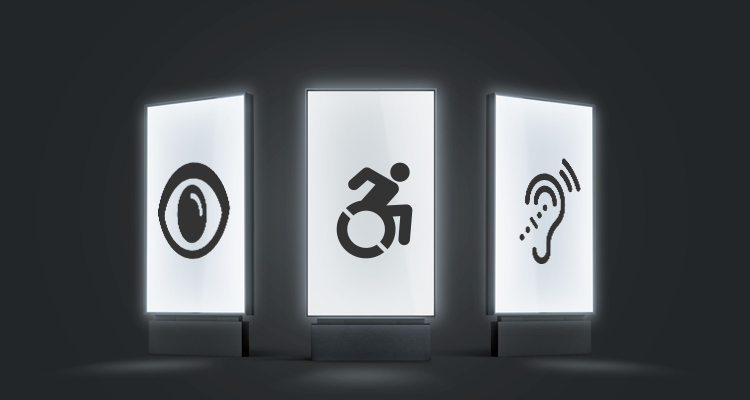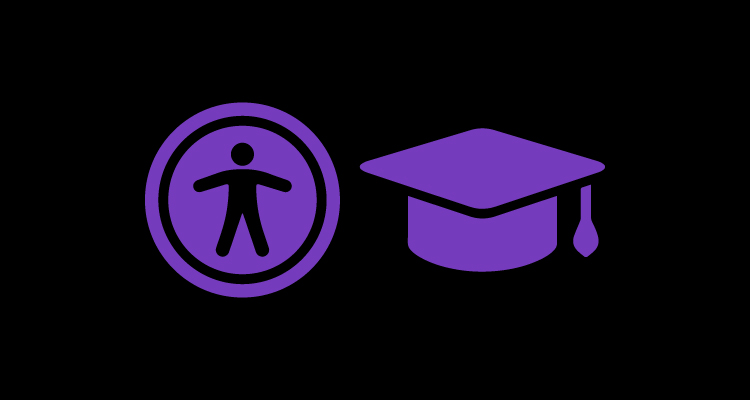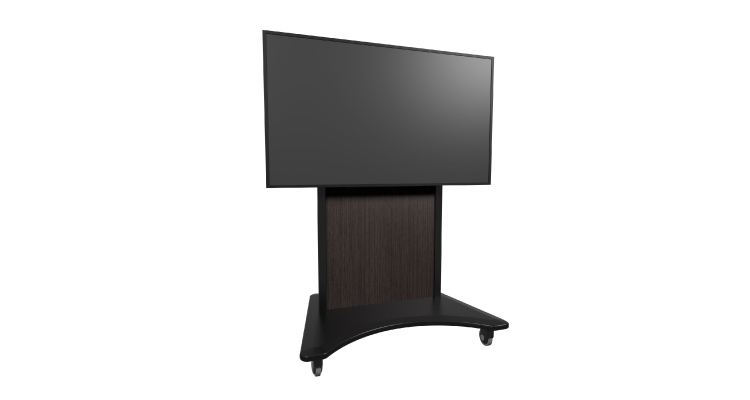Making Digital Signage Accessible for All

In my first column “What I Learned About the Digital Signage Industry (Year One),” I provided a lot of information (especially on my link to key words and definitions) about how to engage and focus on the human senses to enhance the digital signage experience. But what if your audience members have disabilities that could limit their experiences? Per the Centers for Disease Control and Prevention, 61 million adults in the U.S. live with a disability.
My goal with this article is to point out that there are methods and technology available to help everyone share a positive digital signage experience. When working on a digital signage install, you must focus on all the components of the project, short and long term, and how it will affect various individuals, based on different disability requirements.
Although I have sold various types of technology for over 25 years, much of the products and services were either located in equipment rooms/racks or co-location facilities. I have also worked with video managed services where all the hardware was provided by, installed, and integrated by systems integration companies. My first large project ($400,000+) — in which I was tasked with providing technology that enabled clients with and without disabilities to share a similar experience — was for a large NYC law firm in 2014. We had various age groups and challenges as the executive boardroom was 70’ long x 18’ wide x 8.5’ high and could hold over 65 attendees/speakers.
So, we had to consider a couple of different factors:
- Aural — We installed audio uplift technology to enhance the sound from anyone speaking from anywhere in the room.
- Visual — We installed a high lumen 120” diagonal video wall — actually as the front wall — to increase the space in the front of the room for wheelchair accessibility. So anyone sitting at either end of the table or in chairs in the back corners could see the content, even when all the window shades were up. Also, we set up iPads (and installed the latest technology) for every chair/space to ensure that (as an example) when the presenter clicks through to the next slide, document, video, etc., that same content appears on all the iPads and video wall with virtually no delay. This feature increased interactivity amongst all participants in the room, while also enabling those who are visually impaired to see the content on the iPads right in front of them.
Although this project was published in Sound and Communications Magazine, the focus was on the various technology used in the room, rather than including all the benefits for their potentially disabled attendees/speakers.
As time went on and I worked on more projects around the country (and eventually in other countries), I learned more about addressing end users’ needs to ensure the best possible experience for all.
My Additional Experience
I was very fortunate to have the opportunity in 2018 — while working in the AV integration industry — to support The Viscardi Center, a nonprofit organization in Long Island dedicated to employing, empowering and educating adults and children with disabilities. This helped me understand the details needed to support each environment in the facility while preparing for a few projects over the course of about a year.
For example, in the boardroom, we investigated two options for those who cannot touch the control panels located on the table and front credenza. The first option was voice activation (for example, using a voice activation device in conjunction with programming software) to provide all possible commands. We decided on using a separate stylus (saved time to set up). One of the side displays was built into the wall to provide more space to get around the large conference room table. We also added assisted listening devices in the multimedia conference room. In the cafeteria, we used ceiling pole mounts for the displays to ensure everyone could view them clearly, and we kept walking areas clear. We hung two ceiling-mounted projectors in the gym, each facing separate angled projection screens on either side of the room to ensure everyone could see either screen (and again, not take up any floor space). Also, the client needed to use closed captioning on its VMR platform and the ability to pin a speaker and a sign language interpreter as the larger tiles (images) within video calls.
Regulations
The Americans with Disabilities Act differs from Section 508 regulations, which are an amendment to the Rehabilitation Act of 1973 (29 U.S.C. § 794d) and apply to all information technology. Section 508 requires that the federal government procure, create, use and maintain Information Communication Technology including computer hardware, software and documentation that is accessible to people with disabilities, regardless of whether or not they work for the federal government.
Information on Section 508: https://www.ada.gov/508/
Examples
ADA Compliance of Displays:
Any screen enclosure or wall-mounted digital sign must not stick out more than 4” from a wall with a minimum of 27” and maximum of 80” off the ground (A.F.F on architect diagrams).
ADA Compliance of Interactive Touch Screens (i.e. Room Scheduling Panels, Kiosks, etc.):
Enclosures must be a maximum height of 48” within 20” or less of a person’s reach. Kiosks angled 15-20 degrees upwards are easier to use for wheelchair access.
Note: Since digital signage applications are typically focused on the visual aspect of the experience, voice-activated technology can be utilized, including keyboards discernible by touch and raised, adding braille instructions, etc. Wayfinding for the visually impaired is also critical. Companies such as RightHear are focused on addressing these challenges.
Thank you for your time and I hope you found this column interesting and helpful.
Here is the latest list of useful industry key words and definitions.





